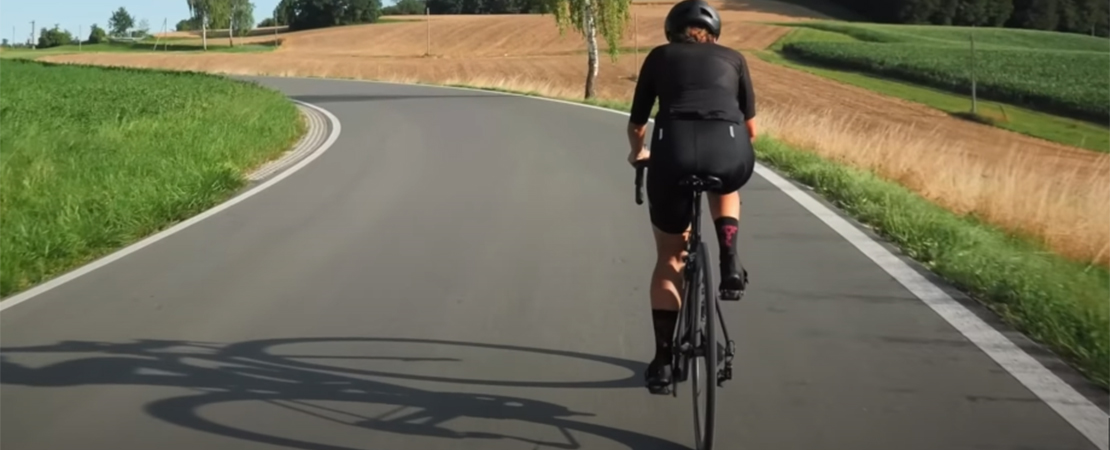Cycling is a top-notch cardio workout that torches fat and enhances muscle definition in the buttocks. Incorporating strength exercises like squats, lunges, and hip thrusts into your fitness routine to boost your glute size proves more effective.
Cycling won’t directly build a bigger butt, but it will reduce fat and enhance its appearance. Cycling alone doesn’t alter your butt’s size. For significant glute gains, prioritize strength training.
This blog post will debunk myths, delve into factors influencing butt size from cycling, explore the science of a bigger butt, and analyze how cycling affects your posterior’s size and shape.
Does Cycling Make Your Butt Bigger: 2 Muscle Myths
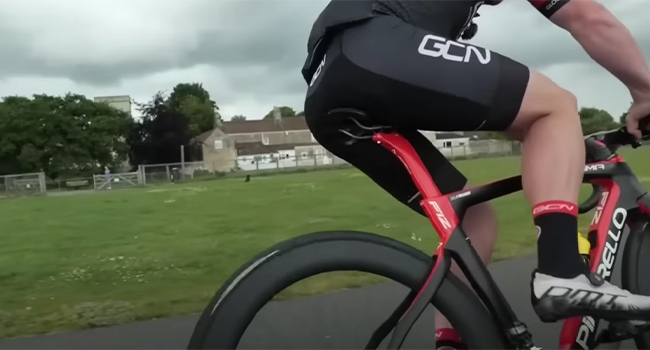
Cycling, a popular form of exercise and transportation worldwide, is often surrounded by myths regarding its effects on the body. Addressing these misconceptions is crucial for understanding how cycling affects muscle growth, particularly in the gluteal muscles.
A Debunking of Common Muscle Growth Misconceptions
Two myths are explored, and the truth behind them is revealed. From the impact of cycling on bone density to the importance of strength training for cyclists, discover the facts that challenge conventional wisdom.
Cycling Does Not Enhance Bone Density
Cycling, unlike weight-bearing exercises like running, is often said not to promote increased bone density because of its low-impact nature (Breathe Physio).
While cycling may not significantly increase bone density like weight-bearing exercises, it can still contribute to overall physical health and support muscle growth and endurance.
Cyclists Don’t Need to Strength-Train Their Lower Body
Another common myth suggests that cyclists must avoid incorporating strength training into their routines. Contrary to this belief, strength training is beneficial for cyclists. It can enhance performance, improve muscle balance, and reduce the risk of injury.
Scientific Perspective
Cycling primarily involves the lower body muscles, including the quadriceps, hamstrings, calves, and gluteal muscles. A recent article in Sports Science & Medicine highlights the importance of muscle strength and endurance in cycling performance, demonstrating that targeted strength training, including for the lower body, can significantly benefit cyclists.
The interplay between genetics, exercise, and body composition is complex. While genetics set a baseline for your body’s potential, exercise like cycling can help sculpt and enhance your physique within those parameters.
A study referenced by the National Center for Biotechnology Information (NCBI) suggests that while we cannot change our genetic makeup, targeted physical activities can influence muscle hypertrophy, leading to changes in the appearance of the buttocks.
Typical Cycling Muscles
Cycling engages several muscle groups:
- Quadriceps: These muscles are primarily responsible for knee extension and are heavily utilized during the downward pedal stroke.
- Hamstrings: They work to flex the knee and assist in the upward pedal stroke.
- Calves: The calf muscles help with the push and pull during pedaling.
- Gluteal Muscles: The gluteus maximus, medius, and minimus are included in this group. These muscles are critical contributors to hip extension and are vital in powering the pedal stroke, especially during climbs or high-resistance cycling.
Can Cycling Make Your Butt Bigger: 5 Factors
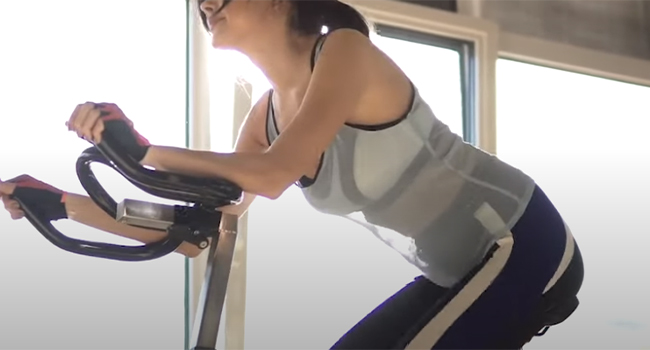
Cycling is a fantastic workout, not just for your health but also for shaping your body. How it changes the shape and size of your butt depends on a few essential factors. Let’s explore how the intensity and duration of your cycling workouts can make a difference.
Intensity and Duration of Cycling
Regarding cycling, how hard you pedal and how long you ride matters. Here’s why:
- Long-Distance vs. Short Bursts: Riding your bike over long distances at a steady pace is excellent for building endurance and burning fat. Short, powerful bursts of pedaling, like when you sprint, are better for building muscle. So, if you’re looking to increase the size of your butt muscles, adding some sprints into your cycling routine could help. Cycling low-intensity and long-duration workouts can help you lose excess weight, including that around your hips.
- Uphill Cycling for Muscle Building: Ever noticed how your legs and butt feel extra worked after biking uphill? That’s because cycling up an incline requires more effort from the muscles in your buttocks. This additional effort can lead to bigger muscles. So, include some hills on your cycling route. Cycling, regardless of high intensity or climbing slopes, is not enough resistance to help you increase the size of your
glutes and make your bum bigger.
Type of Cycling
Cycling is not just a single activity; it comes in various forms, each with its benefits. For shaping your butt, the type of cycling you do can have different effects. Let’s explore how stationary biking compares to outdoor cycling and explore the impact of other cycling disciplines.
Stationary Bike vs. Outdoor Cycling
Both stationary bikes and outdoor cycling are excellent workouts, but they offer unique experiences and benefits:
- Stationary Bike: Stationary bikes are great for consistent, controlled workouts. You can easily adjust the resistance to mimic uphill cycling, which works your butt muscles harder. It’s also convenient, allowing you to cycle regardless of the weather outside.
- Outdoor Cycling: Outdoor cycling can provide a more engaging and challenging workout by exposing you to varying scenery and terrain. Constantly adapting to hills and uneven surfaces can help your muscles get a dynamic workout that can better shape your buttocks. Cycling may help lose thigh fat and tone your thighs and buttocks muscles.
Different Cycling Disciplines and Their Effects
Different styles of cycling target your muscles in unique ways. Here’s how each discipline can affect your butt:
- Road Cycling: This style focuses on endurance. It is beneficial to ride for long periods at a steady pace to burn fat and toning muscles, including those in your butt. However, road cycling may not significantly increase muscle size compared to other forms.
- Mountain Biking: With its varied terrain and need for bursts of power, mountain biking is excellent for building muscle. Navigating through trails requires you to stand up and pedal hard, which engages your butt muscles intensely.
- BMX: BMX involves short, explosive efforts that can help build muscle. The quick sprints and jumps in BMX require significant power from your lower body, including your butt, making it a good option for muscle growth.
Cycling Posture and Technique
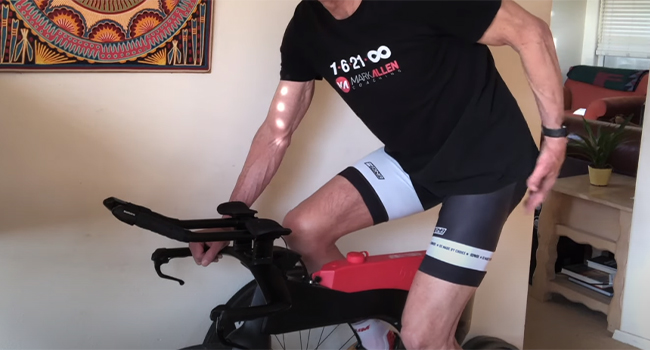
When it comes to shaping and transforming your butt, various factors come into play. These range from genetic makeup to lifestyle choices, such as exercise routines. Cycling is a popular and effective method for enhancing their lower body physique. Let’s explore how cycling posture and technique significantly impact muscle growth and the overall appearance of your butt.
The Importance of Proper Form
According to Liv Cycling experts, maintaining the correct body position on a road bike involves keeping your elbows tucked in rather than spread wide. This change boosts aerodynamics, reduces upper body strain, and enhances pedal power transfer. Cycling West notes that bike posture, which affects comfort and performance, is influenced by balance and other factors.
The University of British Columbia’s guide to cycling ergonomics points out that the inclination of your posture should match your cycling goals. Speed enthusiasts might prefer a flatter position, while those biking for recreation or commuting may opt for a more upright stance (University of British Columbia).
Common Mistakes That Hinder Muscle Growth
Incorrect Seat Height: An improperly adjusted seat can lead to inefficient pedal strokes, reducing the effectiveness of your workout and limiting muscle development. It can also increase the risk of knee and joint stress.
- Poor Upper Body Position: As Fit Kit Systems mentions, optimal cycling posture involves mild flexion in the lumbar and thoracic regions with slight cervical extension. Straying too far from these positions can lead to unnecessary fatigue and reduced efficiency, meaning your muscles could work more effectively (Fit Kit Systems).
- Lack of Posture Variation: The Gokhale Method emphasizes that a suitable form is essential for the best transfer of effort, minimizing fatigue, and reducing wear and tear on the body (Gokhale Method). Sticking to a single posture throughout your ride limits the range of muscles engaged and can prevent optimal muscle growth.
- Ignoring Bike Fit Adjustments: Club Solutions Magazine highlights the importance of adjusting the indoor cycle to fit your body correctly. Almost all indoor bikes allow for adjustments to the seat height, forward/backward position, and handlebars. Failing to make these adjustments can lead to poor posture and decreased performance (Club Solutions Magazine).
Frequency of Training
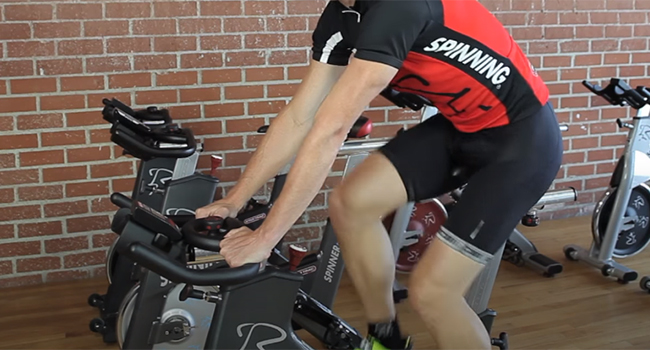
When aiming to modify butt size and shape through cycling or any other form of exercise, finding the right balance is critical to stimulating muscle growth without veering into the territory of over-training, which can adversely affect your progress.
Recommended Cycling Frequency for Muscle Growth
For individuals looking to enhance their thighs and butts by cycling, incorporating regular sessions into their weekly routine is crucial. ACE recommends engaging in strength training exercises, including cycling, about 2 to 3 times per week, which allows for adequate recovery while effectively stimulating muscle growth (ACE).
This recommendation aligns with the principle that muscles need time to repair and grow stronger following a workout, particularly after intense sessions that target specific muscle groups like the glutes.
Over-training and Its Effects on Muscle Development
Consistency is key to muscle growth, but exceeding the optimal frequency and intensity can lead to overtraining, negatively impacting your body’s ability to recover and grow stronger.
The over-training syndrome can manifest through symptoms such as prolonged muscle soreness, decreased performance, fatigue, and even injuries, all of which can hinder progress toward achieving your desired butt size and shape.
A report released by the National Strength and Conditioning Association (NSCA) emphasizes that overtraining can also result in hormonal imbalances and reduced immune function, highlighting the importance of sufficient recovery time between workouts (NSCA).
Nutrition and Recovery
With enhancing the size and shape of your butt, nutrition, and recovery play crucial roles alongside your workout routines. Proper diet and rest are fundamental for muscle growth and repair, impacting your progress and results.
Key Nutrients for Muscle Growth and Repair
- Protein: Muscles are built from protein. Consuming adequate amounts of protein supports the repair and growth of muscle fibers damaged during exercise. Sources include lean meats, fish, dairy, legumes, and plant-based proteins.
- Carbohydrates: Carbohydrates are essential for replenishing glycogen stores used during workouts. They provide the energy required for your muscles to recover and grow. Fruits, whole grains, vegetables, and complex carbohydrates are excellent sources.
- Healthy Fats: Healthy fats contain omega-3 and omega-6 fatty acids, which can help reduce inflammation and aid recovery. Sources include avocados, nuts, seeds, and fatty fish.
- Vitamins and minerals: Vitamins A, C, D, and E, along with iron, zinc, and magnesium, play significant roles in muscle recovery and growth. Consuming various fruits, vegetables, and lean proteins can help you get these essential nutrients.
Importance of Rest Days and Recovery Techniques
Rest Days: Maintaining a rest regimen allows your muscles time to repair and grow. Overlooking rest can lead to over-training, which may lead to injury and hinder muscle growth.
According to a study published in the Journal of Exercise Rehabilitation, adequate rest is paramount for muscle recovery and growth (Journal of Exercise Rehabilitation).
Recovery Techniques: Besides taking rest days, employing recovery techniques can further enhance your muscle’s ability to repair and grow:
- Sleep: Muscle recovery depends on quality sleep. During sleep, the body produces growth hormones, which help repair and build muscle tissue.
- Hydration: Maintaining hydration is crucial to muscle performance and recovery. Water transports nutrients to your muscles and removes waste products.
- Stretching and Foam Rolling: These practices can help reduce muscle tightness and improve flexibility, contributing to better muscle recovery and growth.
Maximizing Glute Growth with Cycling: 3 Techniques
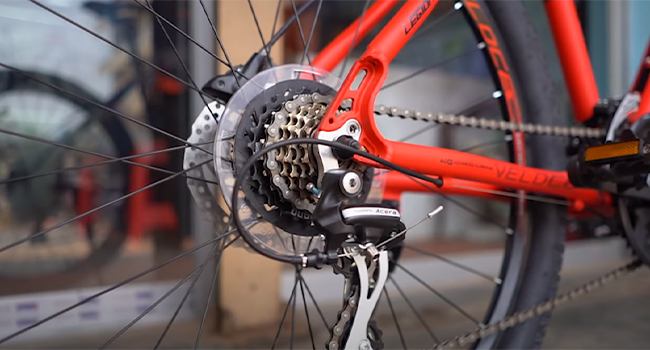
Cycling can enhance your buttocks’ size and shape by focusing on techniques that maximize glute engagement. Adjusting resistance levels, optimizing your cycling position, and incorporating interval training are vital strategies that can significantly impact muscle development in this area.
Resistance and Gear Settings
Adjusting your bicycle’s resistance and gear settings can profoundly impact muscle engagement, particularly in the glutes. Higher resistance levels require more force to pedal, which demands greater muscle activation.
The Journal of Strength and Conditioning Research found that cycling at higher resistances can increase the recruitment of the gluteal muscles (Schnitzler et al., 2018). To effectively target the glutes, accumulate the resistance or gear setting to a level that challenges you without compromising your form.
Positioning
Your bike’s positioning plays a crucial role in targeting the glutes. Adjusting your seat height and distance can change the angle of your hips and the extent to which your glutes are engaged during cycling.
A slightly higher seat position can encourage more excellent hip joint extension, leading to increased activation of the gluteus maximus—the most significant muscle in your buttocks. Leaning slightly forward while maintaining a straight back can help engage the glutes more effectively during your ride.
Interval Training
Incorporating high-intensity interval training (HIIT) into your cycling routine can enhance glute growth by alternating between intense effort and rest periods. This method targets the glutes through varied resistance and boosts your metabolism, facilitating fat loss around the buttocks area, which can help stress its shape.
A European Journal of Applied Physiology study highlighted that HIIT cycling improved muscle power and increased muscle size, indicating its effectiveness for muscle building (Burgomaster et al., 2008).
Conclusion
To maximize the impact of cycling on butt size and shape, it’s essential to focus on resistance and gear adjustments, optimize your positioning on the bike, and incorporate interval training.
These strategies engage the glute muscles more effectively, enhancing your buttocks’ growth and aesthetic appeal.
Remember, consistency, accumulating the intensity of your workouts, proper nutrition, and recovery are vital to achieving the best results.
FAQs
What’s The Biggest Butt Problem For Cyclists?
Buttock discomfort during cycling is commonly known as saddle soreness, although “saddle sore” can also denote a physical sore near the perineum. Perineal pain can arise from various factors, yet it is often attributed to prolonged pressure in the saddle area.
Is Cycling Possible To Cause Glute Pain?
You might experience discomfort because your hips remain closed while cycling. They stay fixed as your leg moves up and down without straightening or rotating adequately to open the hip joint. Tightening hip rotator muscles can lead to pain in the deep gluteal area.

